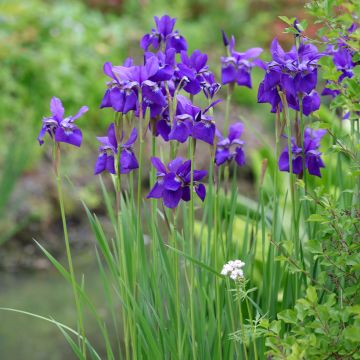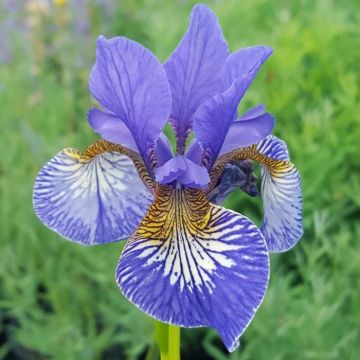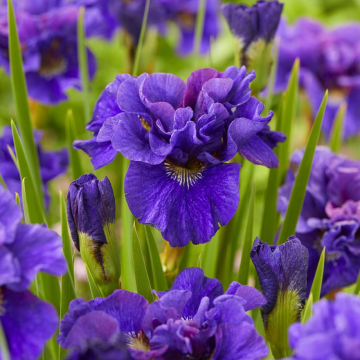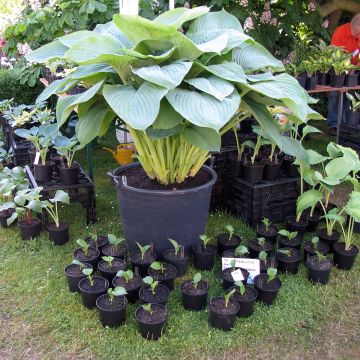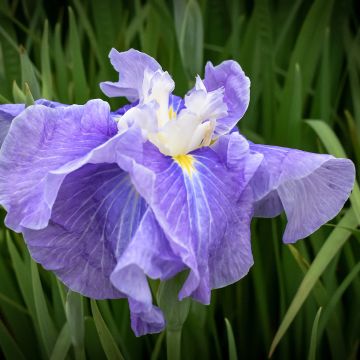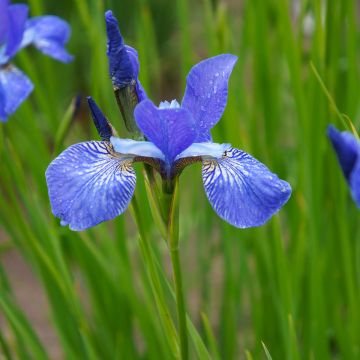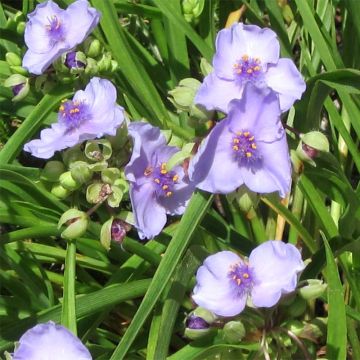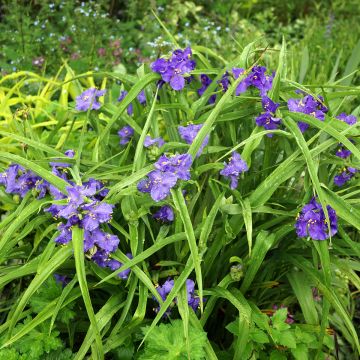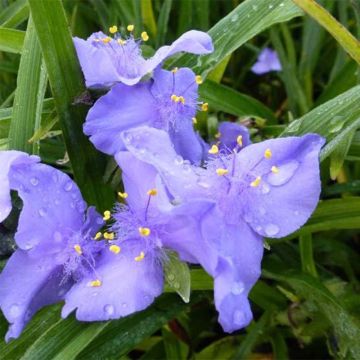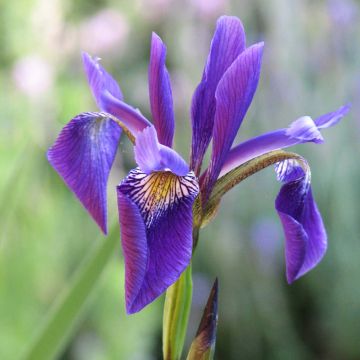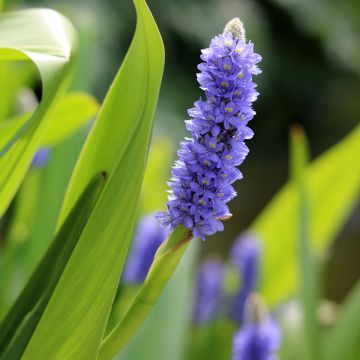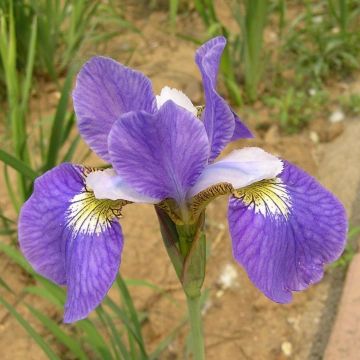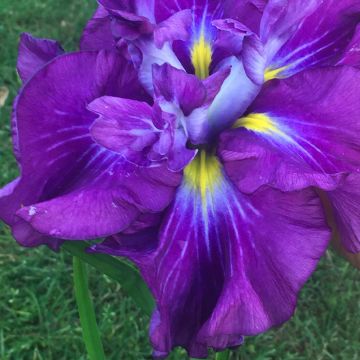Plantfit
Log in / Register
Existing customer?
New customer?
Create an account to track your orders, access our customer service and, if you wish, make the most of our upcoming offers.
My Account
Hello
Shipping country and language
Your country of residence may be:
For a better user experience on our website, you can select:
Your shipping country:
Andorra
Austria
Belgium
Bulgaria
Croatia
Czechia
Denmark
Estonia
Finland
France
Germany
Greece
Hungary
Iceland
Ireland
Italy
Latvia
Lithuania
Luxembourg
Monaco
Netherlands
Poland
Portugal
Romania
Slovakia
Slovenia
Spain
Sweden
Switzerland
Language:
French
English
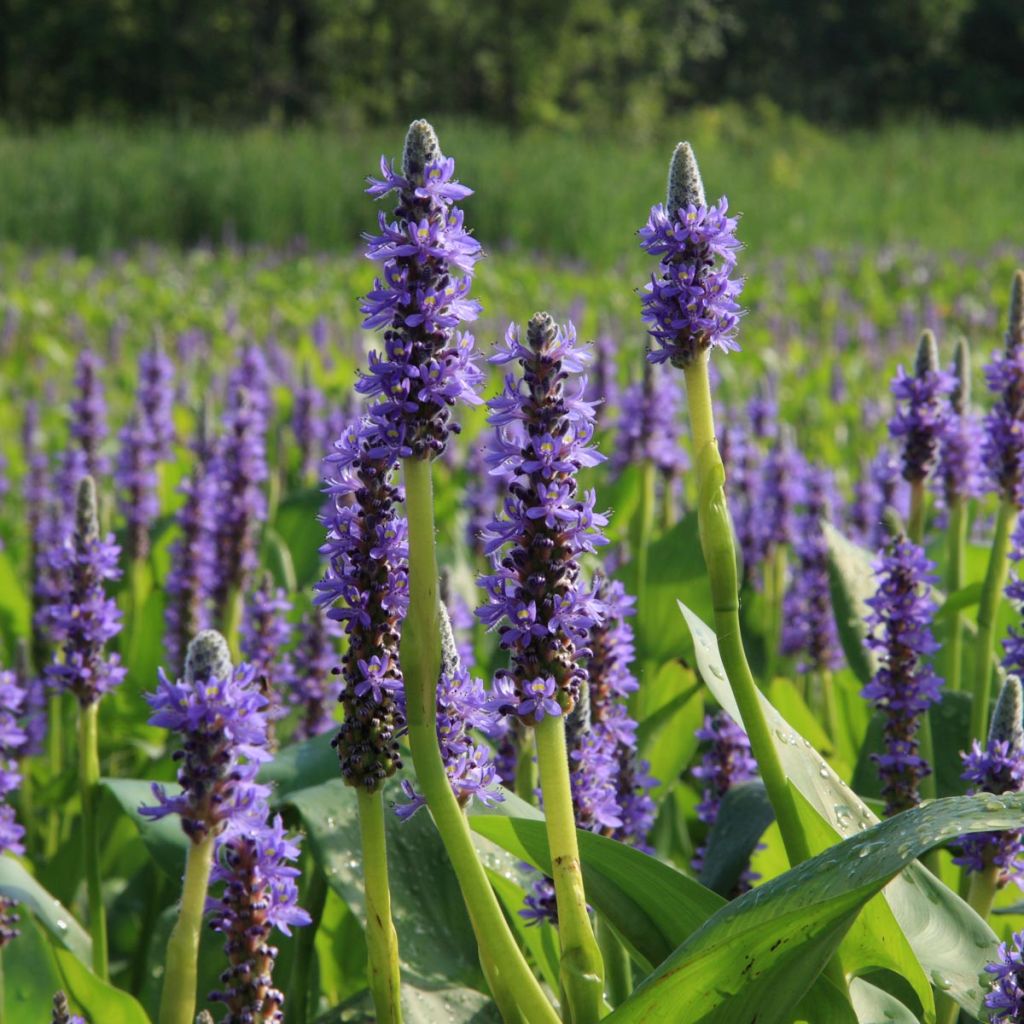

Pontederia cordata - Pontédérie à feuille en coeur
View more pictures
Hide images

Cécilia L.

Pontederia cordata 1ère floraison
Cécilia L. • 89 FR
Pontederia cordata
Pontederia cordata
Pickerel Weed
Stagnant growth. Young plants at the edge of the pond, specific research area conditions respected.
Hélène, 30/04/2023
Order in the next for dispatch today!
Dispatch by letter from 3,90 €.
Delivery charge from 5,90 € Oversize package delivery charge from 6,90 €.
More information
This item is not available in your country.
Shipping country:
 Andorra
Andorra Austria
Austria Belgium
Belgium Bulgaria
Bulgaria Croatia
Croatia Czechia
Czechia Denmark
Denmark Estonia
Estonia Finland
Finland France
France Germany
Germany Greece
Greece Hungary
Hungary Iceland
Iceland Ireland
Ireland Italy
Italy Latvia
Latvia Lithuania
Lithuania Luxembourg
Luxembourg Monaco
Monaco Netherlands
Netherlands Poland
Poland Portugal
Portugal Romania
Romania Slovakia
Slovakia Slovenia
Slovenia Spain
Spain Sweden
Sweden Switzerland
SwitzerlandSelect delivery date,
and select date in basket
This plant carries a 12 months recovery warranty
More information
We guarantee the quality of our plants for a full growing cycle, and will replace at our expense any plant that fails to recover under normal climatic and planting conditions.
From 5,90 € for pickup delivery and 6,90 € for home delivery
Express home delivery from 8,90 €.

Would this plant suit my garden?
Set up your Plantfit profile →
Description
The heart-leaved Pickerel Weed (Pontederia cordata) is one of the most beautiful aquatic and semi-aquatic plants that can be found in ornamental ponds. It has an upright habit with splendid shiny green foliage and beautiful azure-blue to lavender-blue inflorescences. It is a flowering plant, easy to grow and non-invasive. A true wonder!
Pontederia cordata belongs to the Pontederiaceae family . It is native to the shallow shores of North America, from Nova Scotia to Florida. It is a deciduous perennial plant with an upright and spreading habit. It reaches a height of 70 cm (28 in) with a spread of 40 cm (16 in), and has a rapid growth rate. It blooms from June to autumn, with dense spikes of 5 to 10 cm (2 to 4 in), resembling orchids, composed of bell-shaped flowers in azure-blue to lavender-blue, illuminated by yellow stamens. The flowering is honey- and nectar-producing, followed by ovoid, red and sticky fruits that are enjoyed by ducks. The lanceolate, shiny, heart-shaped leaves, 12 cm (5 in) wide and 25 cm (10 in) long, remain dark green throughout the season, sometimes with brown spots. It is a plant with thick and creeping rhizomes. It has a good purifying value (purifying value of reeds divided by two)*.
Plant Pontederia in rich soil, submerged from 0 to 30 cm (0 to 12 in), or in baskets of 35 x 35 cm (14 x 14 in), preferably in spring, by burying the rhizome 10 to 15 cm (4 to 6 in) into the mud or by immersing the baskets. The substrate should ideally be humus-rich and clayey or sandy-clayey. This plant does not have any particular requirements regarding soil pH, which can be slightly alkaline, neutral, or slightly acidic. Install it in full sun or partial shade. Faded flowers can be removed to promote the appearance of new flower spikes. Pontederia is perfectly hardy and highly resistant to urban pollution.
Pontederia cordata is ideal in a wild or garden pond, or for decorating a patio container. This plant can be used for mass planting in flooded areas, in bogs.
*Phytopurification plants, such as Pontederia cordata, are increasingly used for small private wastewater treatment plants and also for the installation of natural swimming pools and eco-friendly pools. First and foremost, they provide oxygen to the bacteria on the roots. It is these bacteria that transform organic matter into mineral matter and nutrients. Secondly, the plant feeds on nutrients and absorbs elements that we want to eliminate, such as nitrates, phosphates, and heavy metals.
The fruits of Pontederia were once consumed fresh, roasted, or powdered.
Pontederia cordata in pictures
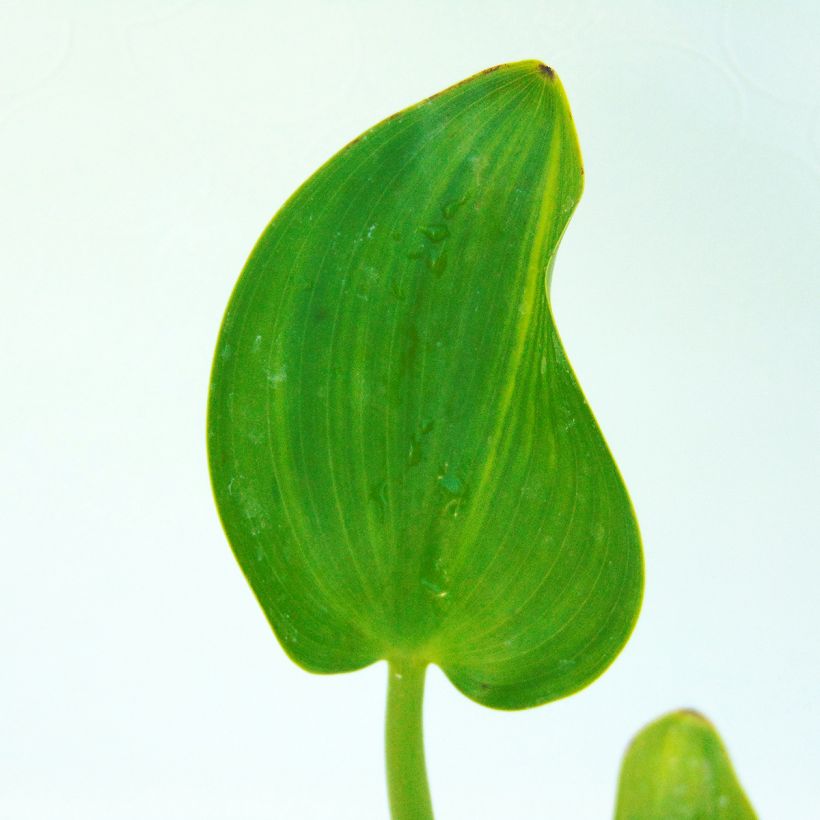

Flowering
Foliage
Plant habit
Botanical data
Pontederia
cordata
Pontederiaceae
Pickerel Weed
North America
Planting and care
Plant Pontederia in rich soil, submerged from 0 to 30 cm (0 to 12 in), or in 35 x 35 cm (14 x 14 in) baskets, preferably in spring, by burying the rhizome 10 to 15 cm (4 to 6 in) into the mud, or by immersing the baskets. The substrate should ideally be humus-bearing and clayey or loamy clay. This plant has no specific requirements regarding soil pH, which can be slightly alkaline, neutral, or slightly acidic. Install it in full sun or partial shade. Faded flowers can be removed to promote the emergence of new spikes. Pontederia is perfectly hardy and highly resistant to urban pollution.
Planting period
Intended location
Care
- , onOrder confirmed
Reply from on Promesse de fleurs
Summer flowering perennials
Haven't found what you were looking for?
Hardiness is the lowest winter temperature a plant can endure without suffering serious damage or even dying. However, hardiness is affected by location (a sheltered area, such as a patio), protection (winter cover) and soil type (hardiness is improved by well-drained soil).

Photo Sharing Terms & Conditions
In order to encourage gardeners to interact and share their experiences, Promesse de fleurs offers various media enabling content to be uploaded onto its Site - in particular via the ‘Photo sharing’ module.
The User agrees to refrain from:
- Posting any content that is illegal, prejudicial, insulting, racist, inciteful to hatred, revisionist, contrary to public decency, that infringes on privacy or on the privacy rights of third parties, in particular the publicity rights of persons and goods, intellectual property rights, or the right to privacy.
- Submitting content on behalf of a third party;
- Impersonate the identity of a third party and/or publish any personal information about a third party;
In general, the User undertakes to refrain from any unethical behaviour.
All Content (in particular text, comments, files, images, photos, videos, creative works, etc.), which may be subject to property or intellectual property rights, image or other private rights, shall remain the property of the User, subject to the limited rights granted by the terms of the licence granted by Promesse de fleurs as stated below. Users are at liberty to publish or not to publish such Content on the Site, notably via the ‘Photo Sharing’ facility, and accept that this Content shall be made public and freely accessible, notably on the Internet.
Users further acknowledge, undertake to have ,and guarantee that they hold all necessary rights and permissions to publish such material on the Site, in particular with regard to the legislation in force pertaining to any privacy, property, intellectual property, image, or contractual rights, or rights of any other nature. By publishing such Content on the Site, Users acknowledge accepting full liability as publishers of the Content within the meaning of the law, and grant Promesse de fleurs, free of charge, an inclusive, worldwide licence for the said Content for the entire duration of its publication, including all reproduction, representation, up/downloading, displaying, performing, transmission, and storage rights.
Users also grant permission for their name to be linked to the Content and accept that this link may not always be made available.
By engaging in posting material, Users consent to their Content becoming automatically accessible on the Internet, in particular on other sites and/or blogs and/or web pages of the Promesse de fleurs site, including in particular social pages and the Promesse de fleurs catalogue.
Users may secure the removal of entrusted content free of charge by issuing a simple request via our contact form.
The flowering period indicated on our website applies to countries and regions located in USDA zone 8 (France, the United Kingdom, Ireland, the Netherlands, etc.)
It will vary according to where you live:
- In zones 9 to 10 (Italy, Spain, Greece, etc.), flowering will occur about 2 to 4 weeks earlier.
- In zones 6 to 7 (Germany, Poland, Slovenia, and lower mountainous regions), flowering will be delayed by 2 to 3 weeks.
- In zone 5 (Central Europe, Scandinavia), blooming will be delayed by 3 to 5 weeks.
In temperate climates, pruning of spring-flowering shrubs (forsythia, spireas, etc.) should be done just after flowering.
Pruning of summer-flowering shrubs (Indian Lilac, Perovskia, etc.) can be done in winter or spring.
In cold regions as well as with frost-sensitive plants, avoid pruning too early when severe frosts may still occur.
The planting period indicated on our website applies to countries and regions located in USDA zone 8 (France, United Kingdom, Ireland, Netherlands).
It will vary according to where you live:
- In Mediterranean zones (Marseille, Madrid, Milan, etc.), autumn and winter are the best planting periods.
- In continental zones (Strasbourg, Munich, Vienna, etc.), delay planting by 2 to 3 weeks in spring and bring it forward by 2 to 4 weeks in autumn.
- In mountainous regions (the Alps, Pyrenees, Carpathians, etc.), it is best to plant in late spring (May-June) or late summer (August-September).
The harvesting period indicated on our website applies to countries and regions in USDA zone 8 (France, England, Ireland, the Netherlands).
In colder areas (Scandinavia, Poland, Austria...) fruit and vegetable harvests are likely to be delayed by 3-4 weeks.
In warmer areas (Italy, Spain, Greece, etc.), harvesting will probably take place earlier, depending on weather conditions.
The sowing periods indicated on our website apply to countries and regions within USDA Zone 8 (France, UK, Ireland, Netherlands).
In colder areas (Scandinavia, Poland, Austria...), delay any outdoor sowing by 3-4 weeks, or sow under glass.
In warmer climes (Italy, Spain, Greece, etc.), bring outdoor sowing forward by a few weeks.
